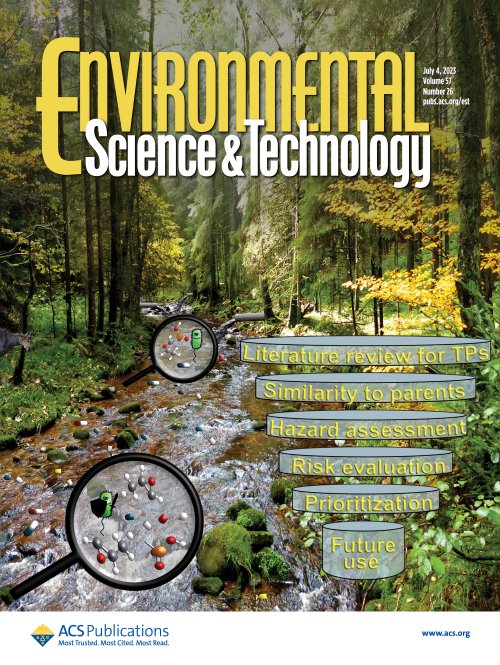New overview of antibiotic-resistant substances in water
The increased presence of antimicrobial substances in water is a concern. The substances can be transformed over their life cycle through several different processes. Researchers from IGE and SLU (Swedish university of agriculture sciences) have therefore compiled an overview of transformation products and estimated their risks.

The aquatic environment is an important reservoir of antibiotic resistance. It is therefore crucial to understand what happens to the antimicrobial substances in there, especially with the increasing use of antibiotics.
Several studies have focused on what happens to antibacterials in humans and animals, but so far there has not been much research about how they affect the environment. There has been even less research about the substances that are converted into another chemical form, so-called transformation products.
Especially when it comes to antibiotic resistance, it is important to take a broad perspective that includes all parts that are affected by antibiotics. Humans, animals, and nature are all involved in the development of resistance to antibacterial agents.
Thorough analysis of transformation products
SLU and IGE researchers have therefore conducted a thorough analysis of all reported antibacterial transformation products that have occurred in surface water environments worldwide. Therefore, the work presented by the researchers in a scientific paper also includes the main factors behind the processes that alter the antibacterial substances. Paying attention to the transformation products (TP) is needed to get a better overall picture of the situation in the environment.
First-ever ranking of antimicrobial transformation products
To make the assessment more straightforward of which transformed antibacterial substances should be paid attention to and removed from the water, the SLU and IGE researchers drew up a list based on associated hazards and risks, such as the ability to induce antibiotic resistance.
It is assumed that when the TPs are more than 95% structurally similar to the original (parent) antibiotic, they tend to share very similar biological activity.
The researchers have also categorised and ranked the substances on the list to facilitate the mitigation of those substances of greatest risk. The list, therefore, offers an important contribution to the fight against antimicrobial resistance.
The list would be used by researchers in several different fields to work towards understanding these substances and reduce the development and spread of antimicrobial resistance. The list highlights which substances are important to focus on to further explore and elaborate the risks from the different transformation products.
Transformation products from antibacterial substances
An antibacterial substance in water can change through several different processes, such as biological degradation and UV light. The substance then becomes different from the original substance, a relationship that researchers liken to a parent-child relationship. The child substance is considered a transformation product (TP).
Certain antibacterial substances and their presence in aquatic environments are tracked worldwide, but because environmental processes change the substances and turn them into new transformed products, there is a high risk of losing track and overlooking substances.
Therefore, understanding what happens to different substances is central to the fight against undesired effects such as environmental consequences or antibiotic resistance, and this requires knowledge. Transformation products often have a similar molecular structure to their parent chemical and could therefore exhibit similar behavior and cause similar effects in the environment and in humans and animals. They can pose a similar risk to their surrounding environment, but also an even greater risk.
Scientific contacts
Researcher from IGE : Christine Baduel : Christine.baduel ird.fr
Researchers from SLU : Paul Löffler and Foon Yin Lai
Référence
Paul Löffler, Beate I. Escher, Christine Baduel, Marko P. Virta, and Foon Yin LaiAntimicrobial Transformation Products in the Aquatic Environment : Global Occurrence, Ecotoxicological Risks, and Potential of Antibiotic Resistance, Environmental Science & Technology 2023 57 (26), 9474-9494
DOI : 10.1021/acs.est.2c09854
 The federation
The federation Intranet
Intranet







